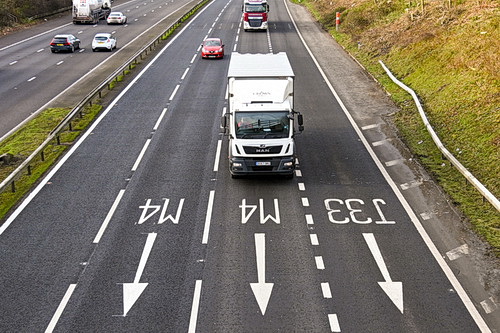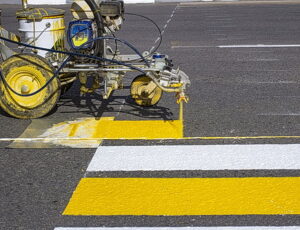
Ever wonder where those white lane lines come from and who paints them? You might want to believe it is Kramer from Seinfeld, but we are sorry to disappoint you, it is not. And the made-up Burkart Expressway is no doubt supposed to be the Long Island Expressway. We are assuming that they changed the name so that no one believed that Kramer actually did change the lanes on the LIE.
So Who Really Does Paint the Lanes?
The lines for lanes on highways in Long Island, NY are typically drawn by government entities responsible for road maintenance and infrastructure. In this case, it would be the responsibility of the New York State Department of Transportation (NYSDOT) or the local county or town highway departments. These agencies are responsible for designing, constructing, and maintaining the roadways, including marking and striping the lanes. They use specialized equipment, such as striping machines, to paint the lines on the road surface according to standardized guidelines and specifications.
How Do They Do It?

The painting process involves several steps. Here’s a general overview of how it is typically done:
- Planning and design: Before marking the lanes, transportation agencies assess the traffic patterns, road geometry, and safety considerations to determine the appropriate number and configuration of lanes. They also consider any specific requirements or regulations for the particular highway.
- Marking layout: Based on the design and standards, the transportation agencies create a layout plan that specifies the location, width, and type of lanes, as well as any additional markings such as arrows, symbols, or special lanes (e.g., HOV lanes).
- Surface preparation: Before painting the lines, the road surface needs to be properly prepared. This may involve cleaning the road, removing dirt, debris, and any existing markings, and ensuring a smooth and dry surface.
- Striping machines: Transportation agencies use specialized striping machines to apply the paint to the road surface. These machines typically have a tank to hold the paint and a system to control the flow and width of the paint application. The machines may be manually operated or mounted on vehicles for larger-scale projects.
- Traffic control: For safety reasons, temporary traffic control measures are implemented during the striping process. This may involve lane closures, cones, or temporary barriers to divert traffic and ensure the safety of both motorists and workers.
- Application: The striping machine is guided along the planned layout, and the paint is sprayed onto the road surface through nozzles. The machines are designed to ensure accurate and consistent line widths and colors. Advanced systems may also have automated guidance or GPS technology to assist in maintaining precise alignment.
- Drying and curing: Once the lines are painted, the paint needs time to dry and cure. The specific drying time depends on the type of paint used, temperature, humidity, and other environmental factors. Traffic may be allowed back on the marked lanes once the paint has sufficiently dried.
Note: The above video is for informational purposes only. Pat Scanlon does not endorse or have any affiliation with vendors or manufacturers mentioned in this article and does not receive any monetary compensation for the businesses mentioned.
Conclusion
So there you have it. The mystery of the highway line makers is solved. We hope this article helped and realize that painting the highways as Kramer did is unproductive😄